|
Getting your Trinity Audio player ready...
|
In today’s digital age, email marketing remains one of the most effective ways to connect with customers and drive sales. However, with so many emails flooding inboxes every day, it can be difficult to stand out from the crowd. That’s why it’s essential to create email marketing campaigns that are not only eye-catching and engaging but also effective in driving results. In this article, we’ll explore the art of creating effective email marketing campaigns, and give you some tips to help you achieve your goals.
Introduction
Email marketing is a highly effective marketing strategy that involves sending promotional messages to a group of people via email. These messages can include advertisements, promotional offers, newsletters, and more. According to research, email marketing has an average ROI of $38 for every $1 spent, making it one of the most cost-effective marketing channels. However, to achieve success in email marketing, you need to create campaigns that engage your audience and drive results.
Define Your Goals and Target Audience
Before you start crafting your email campaigns, it’s important to define your goals and target audience. What do you want to achieve with your emails? Do you want to increase sales, boost website traffic, or build brand awareness? Understanding your goals will help you create targeted and relevant campaigns that resonate with your audience.
It’s also important to define your target audience. Who are you sending your emails to? What are their interests and pain points? Knowing your audience will help you create content that is engaging and relevant to them.
Craft Attention-Grabbing Subject Lines
Your subject line is the first thing your audience sees when they receive your email, so it’s important to make it attention-grabbing and compelling. A good subject line should be clear, concise, and relevant to the content of the email. Use action words and create a sense of urgency to encourage your audience to open your email.
Create Engaging and Relevant Content
Your content is the meat of your email, and it’s what will ultimately determine whether your audience takes action or not. Your content should be engaging, relevant, and valuable to your audience. Use a conversational tone and keep your language simple and easy to understand.
When creating content, consider the pain points of your audience and offer solutions to their problems. Use visuals, such as images or videos, to break up the text and make your emails more visually appealing.
Personalize Your Emails
Personalization is key to creating effective email campaigns. Use your audience’s first name and tailor your content to their interests and behaviors. Use data such as their past purchases, website behavior, and demographics to create targeted and personalized content that resonates with your audience.
Segment Your Email List
Segmentation involves dividing your email list into different groups based on specific criteria, such as past purchases or geographic location. Segmenting your list allows you to create targeted campaigns that are more relevant to each group. This can increase open rates, click-through rates, and ultimately drive more sales.
Optimize for Mobile Devices
More than half of all emails are opened on mobile devices, so it’s essential to optimize your email campaigns for mobile. Use a responsive design that adapts to different screen sizes, and keep your content short and easy to read on small screens.
Include Clear and Compelling CTAs
Your call-to-action (CTA) is what drives your audience to take action, whether it’s making a purchase, signing up for a newsletter, or visiting your website. Make sure your CTAs are clear and compelling, and that they stand out in your email. Use action-oriented language and create a sense of urgency to encourage your audience to take action.
A/B Testing
A/B testing involves testing different variations of your email campaigns to see which performs better. This can include testing different subject lines, content, CTAs, and more. A/B testing allows you to optimize your campaigns for better results and can help you learn more about your audience’s preferences and behaviors.
Monitor and Analyze Your Results
Finally, it’s important to monitor and analyze your email marketing results. Use metrics such as open rates, click-through rates, and conversion rates to track the performance of your campaigns. Use this data to optimize your campaigns for better results and to gain insights into your audience’s behavior and preferences.
Conclusion
Creating effective email marketing campaigns that drive results takes time and effort, but it’s essential for the success of your business. By defining your goals and target audience, personalizing your emails, creating engaging and relevant content, segmenting your email list, and using A/B testing and monitoring and analyzing your results, you can create email campaigns that stand out and drive results.
FAQs
- How often should I send emails to my audience?
- The frequency of your emails depends on your audience and your goals. Some businesses send daily emails, while others send weekly or monthly newsletters. It’s important to find a frequency that works for your audience and your business.
- How do I avoid my emails being marked as spam?
- To avoid your emails being marked as spam, make sure you have permission from your audience to send them emails. Use a clear and compelling subject line, and avoid using spam trigger words such as “free” or “discount.”
- How do I measure the success of my email campaigns?
- Use metrics such as open rates, click-through rates, and conversion rates to measure the success of your email campaigns. Monitor these metrics over time and use the data to optimize your campaigns for better results.
- Should I use a newsletter or promotional emails?
- The type of email you use depends on your goals and your audience. Newsletters are great for building relationships with your audience, while promotional emails are better for driving sales. Consider your goals and your audience when choosing the type of email to send.
- How important is personalization in email marketing?
- Personalization is key to creating effective email campaigns. By tailoring your content to your audience’s interests and behaviors, you can create targeted and personalized content that resonates with your audience and drives results.
